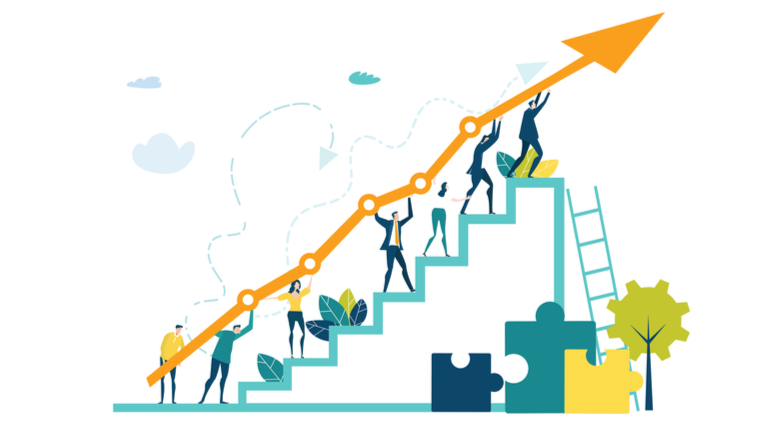APMP recently hosted its sixth Capture and Business Development Conference (CBDC), a one-day event — held online this year — specifically designed for those responsible for winning new business at work. The conference offered more than 18 hours of continuous content, dedicated to the educational and professional growth of attendees. One of these sessions, a panel discussion titled “The Future of Winning,” covered the topics that are top of mind for all capture and business development professionals: how the pandemic is impacting winning (and losing), where technology fits in capturing work and assessing the competition, and how we maintain that human touch and connection, even when we’re far apart.
The panel was moderated by Brad Douglas, executive vice president, global strategy at Shipley Associates, while Kristin Dufrene, CPP APMP Fellow, executive director, strategic capture management at CACI International Inc., and Jamie Ninneman, CPP APMP, senior global director, proposal management at SAP, provided insights on industry trends and their perspectives on the outlook of the capture and business development role. CBDC registrants can watch the full session on-demand, where they expand upon these three takeaways and more.
1. Change is not coming — it’s already here. Competing for business now is different from what it was just a few years ago and even more so due to the COVID-19 pandemic. This, as Dufrene explained, has made it more difficult to get in front of the customer because of all the restrictions, and that’s something she doesn’t see changing quite yet. “I don’t have a crystal ball,” she said, “but five years from now, I think we’re still going to be a very diverse and remote area, where the government is going to be working from remote locations as well as industry, and that’s going to put a little bit of a twist on traditional capture.”
Ninneman added that the pandemic has “fundamentally changed things,” not only for professionals in the industry but for business overall. “It’s basically accelerated, maybe five or six years, what was already in the path,” he said, “and I think we’re going to see that even increase as we move forward.”
On the government side, one trend that Dufrene has seen, particularly in the United States, is an emphasis on TDY (or temporary duty). “Government people who used to stay in their positions for many years [are now sort of being] rotated in and out, so that you get different customers about every two years. Traditional capture best practice would be two years out … so you base your answer to the RFP on that customer you’ve talked to, and by the time the RFP comes out, that capture process is moot. That’s something I think in the future we’re going to have to watch out for and adapt to.”
2. Technology will not make people obsolete, but it will help us become more optimized, more efficient and more effective. “Technology is more important now than ever,” Dufrene said. “In the past, a company could survive on service type contracts … but now the focus is really on solutions, and in the government space, they’re looking for commercial solutions to solve the government’s problems … we need to be looking at proven commercial solutions but how to use them in different ways to solve different problems.”
Ninneman said, “Things like AI and augmentation are going to be important. I also think the aspect of data connection and data information and how we can make effective connecting of these different systems is going to be the biggest challenge moving forward, and it’s something we want to keep an eye on. If I had to choose, I would say that AI and machine learning will undoubtedly hold our attention for many years to come. [We will have to ask the question]: How can we augment what we do to become more optimized? It’s not about becoming more like machines; it’s about using these machines to help us perform more effectively and faster and more easily.
“The second part of this is we’re going to have much more information, and [we must figure out] how to connect and effectively and simply use that, because it’s all about simplicity at a lower cost when it comes to technology.”
3. The human connection is still important, especially during this time when many are apart. Dufrene said that she meets with her team for 15 minutes every day to stay connected, troubleshoot challenges and brainstorm, and have a consistent time for peer-to-peer interaction. She added that having this regular human connection with her team has helped her throughout the pandemic.
“It’s about recognition of the human element,” Ninneman offered. “Recognition of the support we need to offer each other as human beings. That’s the number one thing. When you translate that into business, it’s a sense of transparency. As leaders, we can help bring information to our teams even more transparently than we have done in the past. You may not have all answers, but you alleviate a lot of the anxiety. As managers, we need to focus on the human side first, then manage these deficits that remote work might have for some of our team members who aren’t used to it.”
All CBDC registrants still have access to the entire conference on-demand through Feb. 28. CEUs will be credited to attendees in the beginning of March for all sessions fully watched, live or on-demand.



Join the Conversation